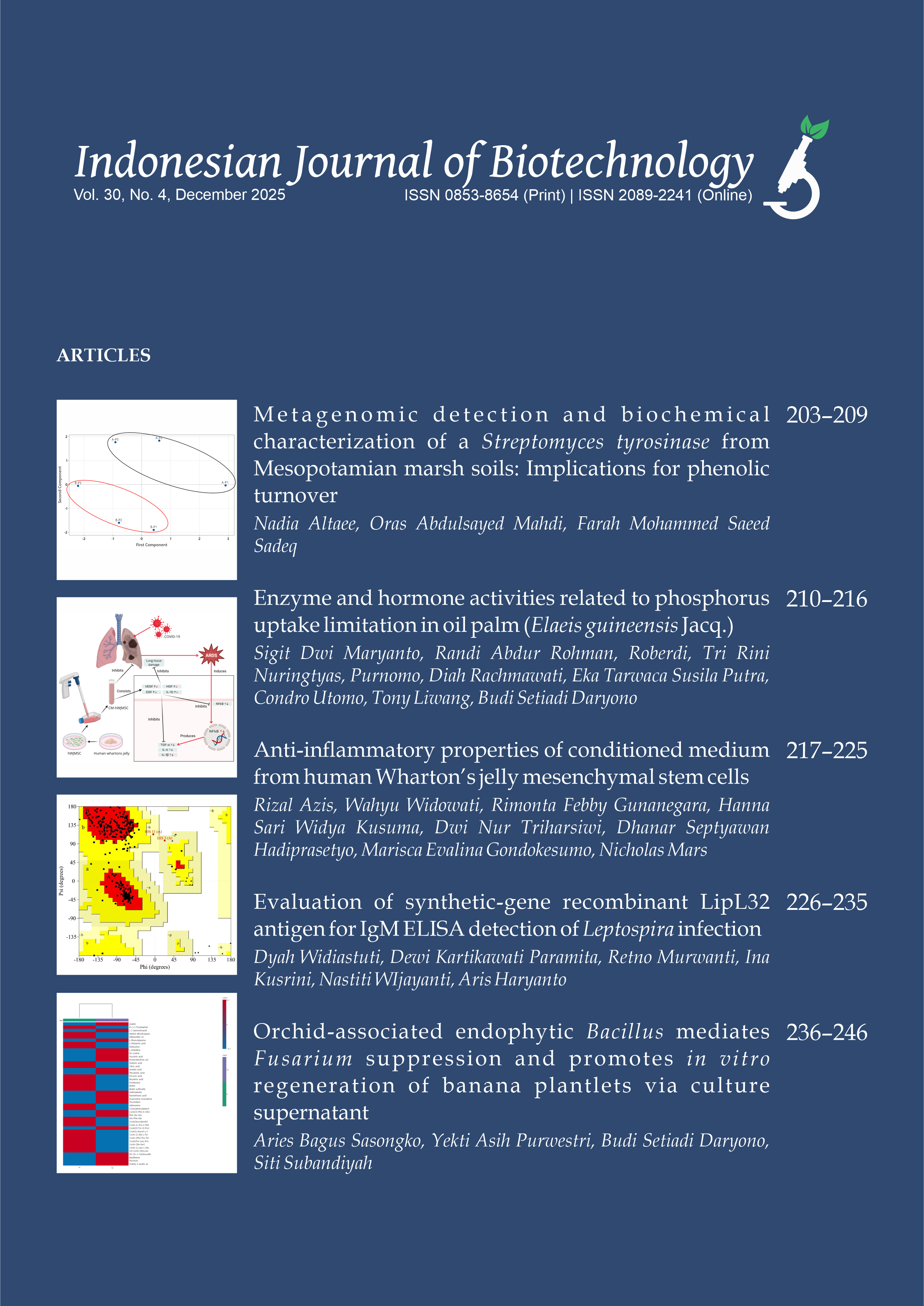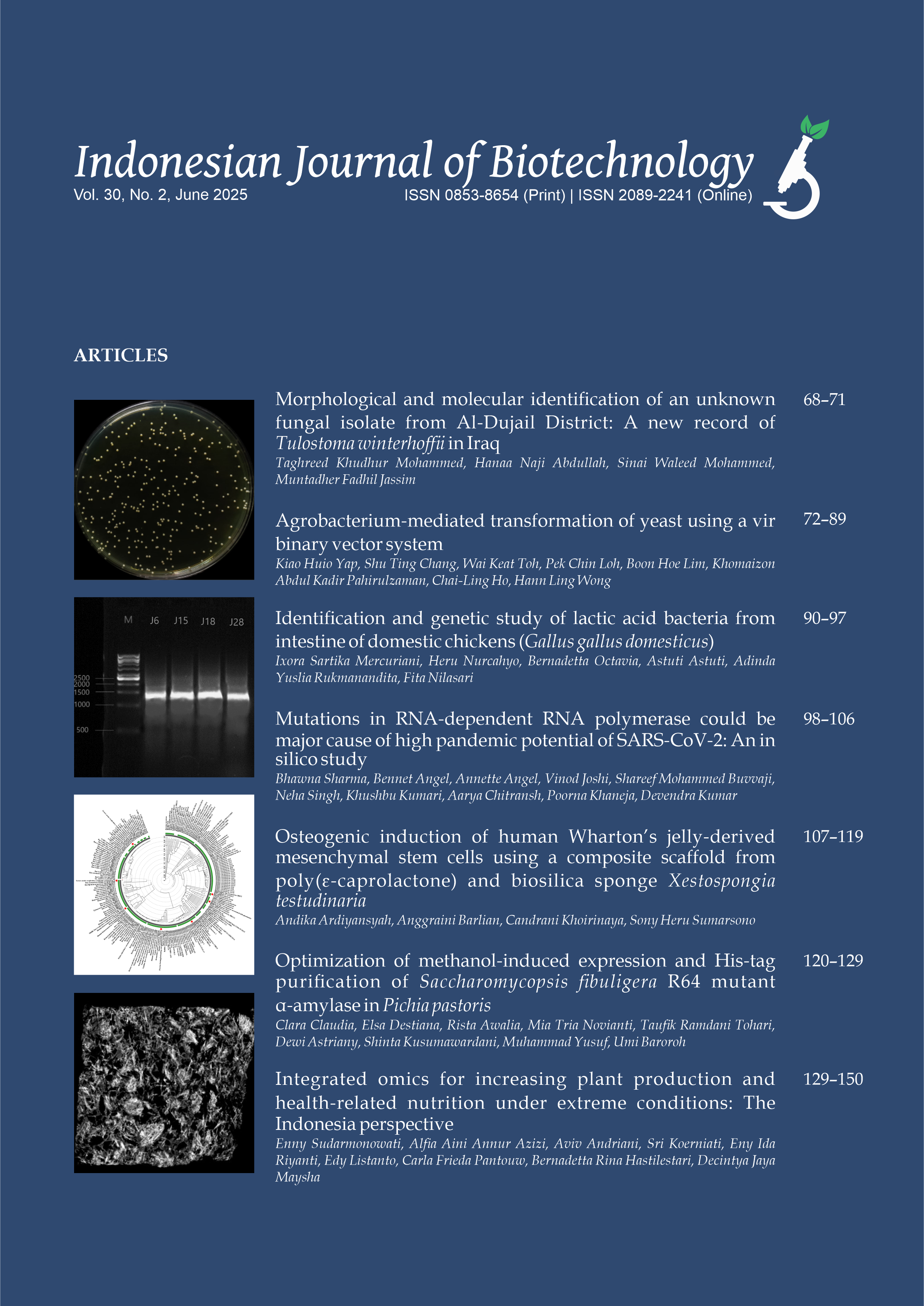Simultaneous clustering analysis with molecular docking in network pharmacology for type 2 antidiabetic compounds
Nur Azizah Komara Rifai(1*), Farit Mochamad Afendi(2), I Made Sumertajaya(3)
(1) Department of Statistics, Bogor Agricultural University, Jalan Meranti Wing 22 Level 4, Kampus IPB Darmaga, Bogor 16680, Indonesia
(2) Department of Statistics, Bogor Agricultural University, Jalan Meranti Wing 22 Level 4, Kampus IPB Darmaga, Bogor 16680, Indonesia
(3) Department of Statistics, Bogor Agricultural University, Jalan Meranti Wing 22 Level 4, Kampus IPB Darmaga, Bogor 16680, Indonesia
(*) Corresponding Author
Abstract
The database of drug compounds and human proteins plays a very important role in identifying the protein target and the compound in drug discovery. Recently, a network pharmacology approach was established by updating the research paradigm from the current “one disease-one target-one drug” to a new “drug-target-disease network”. Ligand-protein interactions can be analyzed quantitatively using simultaneous clustering and molecular docking. The docking method offers the ability to quickly and cheaply predict the ligand-protein binding free energy (DG) in structure-based virtual screening. Meanwhile, simultaneous clustering was used to find subgroups of compounds that exhibit a high correlation with subgroups of target proteins. This study is focused on the interaction between the 306 compounds from medicinal plants (brotowali Tinospora crispa, ginger Zingiber officinale, pare Momordica charantia, sembung Blumea balsamifera, synthetic drugs (FDA-approved) and the 21 significant human proteins associated with type 2 diabetes. We found that brotowali (B018), sembung (S031), pare (P231), and ginger (J036, J033) were close to the synthetic drugs and can possibly be developed as antidiabetic drug candidates. Likewise, the proteins AKT1, WFS1, APOE, EP300, PTH, GCG, and UBC which assemble each other and which have a high association with INS can be seen as target proteins that play a role in type 2 diabetes.
Keywords
Full Text:
PDFReferences
Charrad, M., Ahmed M.B., 2011. Simultaneous clustering: a survey. In: Kuznetsov S.O., Mandal D.P., Kundu M.K., Pal S.K., editors. Pattern recognition and machine intelligence (Vol. 6744) pp 333–338. Springer.
Huang S.Y., Zou X., 2010. Advances and challenges in protein-ligand docking. Int. J. Mol. Sci., 11(18), 3016-3034.
International Diabetes Federation, 2015. IDF Diabetes Atlas Seventh Edition 2015 [internet]. [downloaded 2017 May 29]. pp 140. Available in: http://www.diabetesatlas.org/resources/2015-atlas.html.
Jolliffe I.T., 2002. Principal component analysis, 2nd Ed. New York: Springer-Verlag.
Lipinski C.A., Lombardo F., Dominy B.W., Feeney P.J., 2001. Experimental and computational approaches to estimate solubility and permeability in drug discovery and development settings. Adv. Drug. Deliv. Rev., 46 (1), 3-26.
Madeira S.C., Oliveira A.L., 2004. Biclustering algorithms for biological data analysis: a survey. IEEE/ACM Trans. Comput. Biol. Bioinform., 1(1), 24-45.
Nogara PA.. Saraiva R.A., Bueno D.C., Lissner L.J., Corte C.L.D., Braga M.M., Rosemberg D.B., Rocha J.B.T., 2014. Virtual screening of Acetylcholinesterase inhibitors using the Lipinski’s Rule of Five and ZINC databank. BioMed Research International., 2015(2015), 1-8.
Qomariasih N. 2015. Simultaneous clustering analysis and network pharmacology in the determination of active compounds of jamu for diabetes type 2 [thesis]. Bogor (ID): Bogor Agricultural University.
Usman M.S., 2016. Identifications of significant proteins associated with Diabetes Mellitus (DM) type 2 using network topology analysis of protein-protein interactions [thesis]. Bogor (ID): Bogor Agricultural University.
World Health Organization, 2016. Global Report on Diabetes: Executive Summary [internet]. [downloaded 2017 Feb 2]. pp 4. Available in: http://www.who.int/diabetes/global-report.
Yang M., Chen J.L., Xu L.W., Ji G., 2013. Navigating Traditional Chinese Medicine network pharmacology and computational tools. Evid. Based. Complement. Alternat. Med., 2013(2013), 1-23.
Article Metrics
Refbacks
- There are currently no refbacks.
Copyright (c) 2017 The Author(s)

This work is licensed under a Creative Commons Attribution-ShareAlike 4.0 International License.









